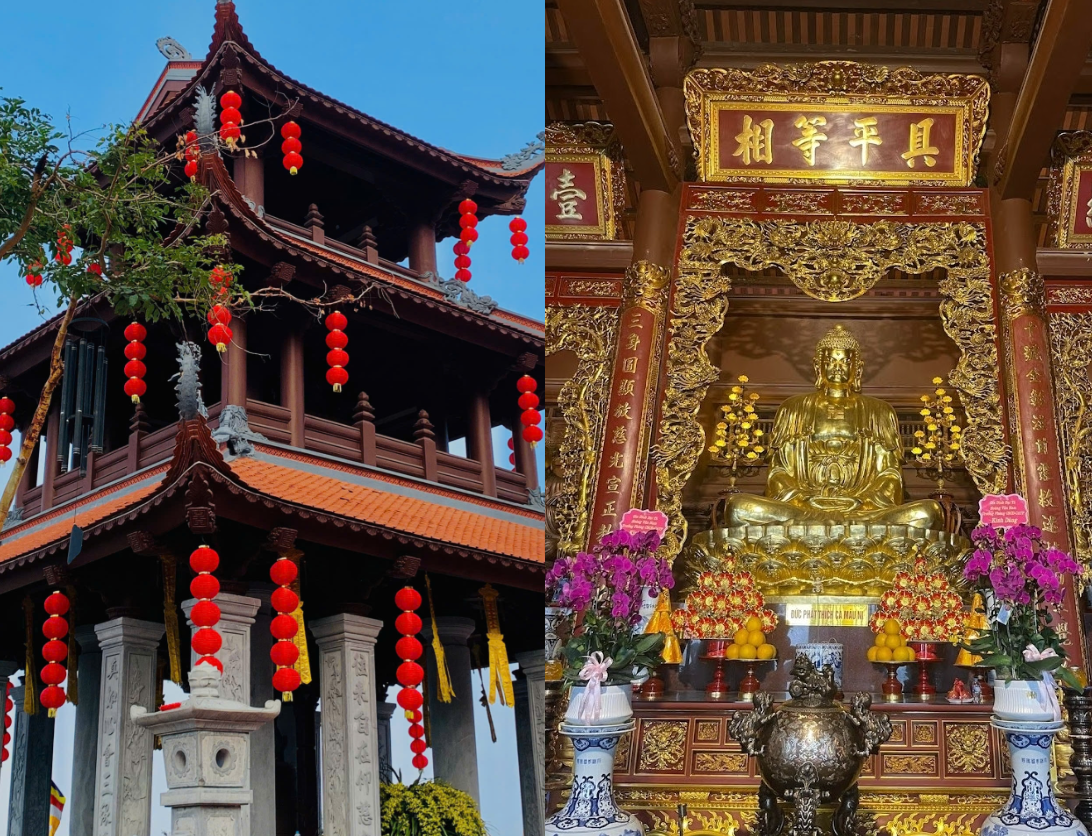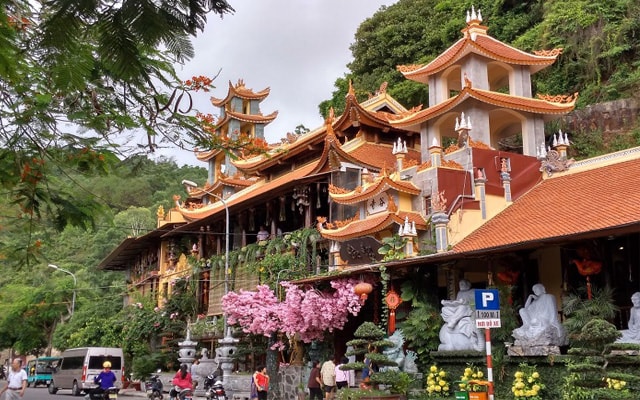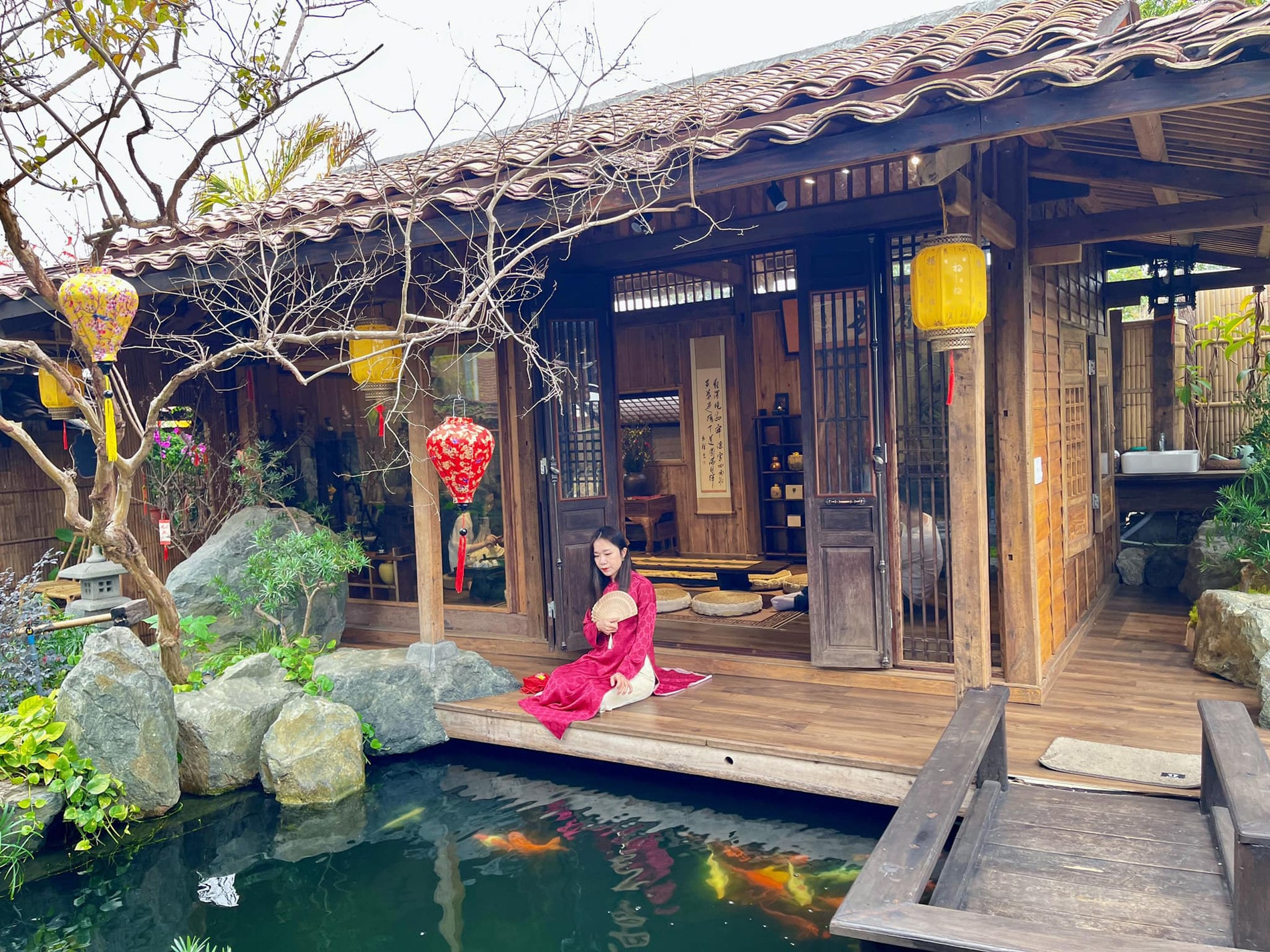Possessing a cool green landscape and unique architecture, 3 pagodas in Hai Phong have become spiritual tourist destinations attracting visitors to visit and worship.

The temple has the largest bronze Buddha statue in Hai Phong
Located about 20 km from the center of Hai Phong city, Long Hoa pagoda (in An Lao district) is a famous spiritual tourist destination in the locality.
According to historical documents, Long Hoa Pagoda was built around the 11th century, under the Ly Dynasty, on Chi Lai Mountain, located in the Voi Mountain scenic relic complex.
Over the course of time and history, the temple has seriously degraded.
In 2017, Long Hoa Pagoda was renovated and many additional constructions were built, creating a spacious spiritual relic complex on a total area of 7.5 hectares.
Not only does it have outstanding architecture, Long Hoa Pagoda also possesses a unique system of Buddha statues, including a 5.2 m high cement statue of Buddha Emperor Tran Nhan Tong.
In particular, in the main hall there is a statue of Buddha Shakyamuni cast from 15 tons of bronze, recorded as the largest bronze statue in Hai Phong up to the present time.
Every year, in early spring, along with the traditional Elephant Mountain festival, Long Hoa Pagoda welcomes tens of thousands of visitors to offer incense, pray for luck and peace.
The thousand-year-old temple hidden in a cave

Hang Pagoda, whose Chinese name is Coc Tu, is located in Zone 1, Van Son Ward, Do Son District, Hai Phong. The pagoda was originally built by ancient people in a stone cave 35 m high and 7 m wide.
The cave is trapezoidal, going deep into the mountain with a length of about 25 m. The depth of the cave is only 1.2 m high and 1.3 m wide. The front of the pagoda faces Do Son beach.
Outside the temple is a statue of Buddha Quan Am, on the right is the ancestral shrine, followed by the tower. On the mountain are dragon and phoenix statues, at the foot of the mountain are statues of the divine turtle and carp.
The temple's landscape still retains many primitive features such as the worshiping arrangement: statues, stone gourds, and stone incense bowls.
The statue of the founder (named Ban) is made of green stone, meditating on a lotus platform, with curly hair in buns and long ears. The statue is in the auspicious cross-legged position, with the right foot exposed.
In addition to the stone Buddha statue, there is also an ancient well in Hang Pagoda - it is said that the monk from India, Phat Quang, used fresh water from this well.
The temple is likened to "miniature Japan"

About 24 km from the center of Hai Phong city, Kim Thien pagoda (also known as Cat Tien pagoda, located in Quang Trung commune, An Lao district) is not only a spiritual tourist destination that attracts local visitors but also a "virtual living" place loved by young people in the port city.
The pagoda was ranked as a city-level historical resistance relic in 2004.
Kim Thien Pagoda has an area of over 3,000 square meters, divided into 2 areas. In front is the worship area with architecture bearing the mark of the Nguyen Dynasty in the early 20th century, including 3 front rooms and 1 Buddha hall.
Behind is the Zen garden, living room, designed separately with many beautiful and peaceful photo angles. This is also a check-in space loved by tourists when visiting Kim Thien Pagoda, known as "miniature Japan" in Hai Phong.
TB (summary)